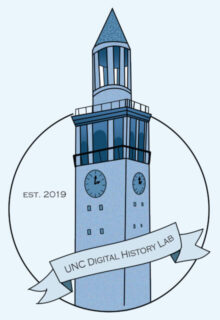Today’s project showcase comes from Emma Rothberg, a PhD Candidate in the History Department focusing on Nineteenth and early Twentieth century urban, cultural, and gender history. Her project was done in her capacity as the U.S. Supreme Court Justice Ruth Bader Ginsburg Predoctoral Fellow in Gender Studies at the National Women’s History Museum. For more on Emma’s work with the museum, please go to the organization’s website.
The National Women’s History Museum, which currently operates mostly online, seeks to tell the stories of women who transformed the Untied States. I have been working there as the U.S. Supreme Court Justice Ruth Bader Ginsburg Predoctoral Fellow in Gender Studies since September 2020. As a Fellow, I work with the Museum’s Education Department to help answer research inquiries, provide general research support, write monthly biographies of women, lead public events, and create online exhibits.
In November, a colleague and I were tasked with creating a Google Arts and Culture exhibit on Maria Tallchief, America’s first prima ballerina and a proud member of the Osage Nation. The exhibit was commissioned by Google and was featured as part of the November 14, 2020 Google Doodle celebrating Native American Heritage Month. The exhibit sought to tell a story that was both personal and national in scope, focusing not only on Tallchief’s amazing life but also on her place in global affairs, United States history, and ballet history.
Since the project was commissioned by Google, I used their Arts and Culture platform to create and house the exhibit. Google Arts and Culture features content from 2000 museum and archives and allows partner institutions to create visual presentations with high resolution images, videos, and sound. Given the scope of this project, and its intended wide audience, I focused on accessibility and dynamic imagery. One thing my colleague and I had to keep in mind was the issue of scrolling text; it is a good rule of thumb when creating a museum exhibit to keep all the text to one page. As many of the museum’s exhibits and biographies are used by students across the country as a resource and entry point for the National History Day projects, my colleague and I used the Hemingway App to maintain a High School reading level for the exhibit.

